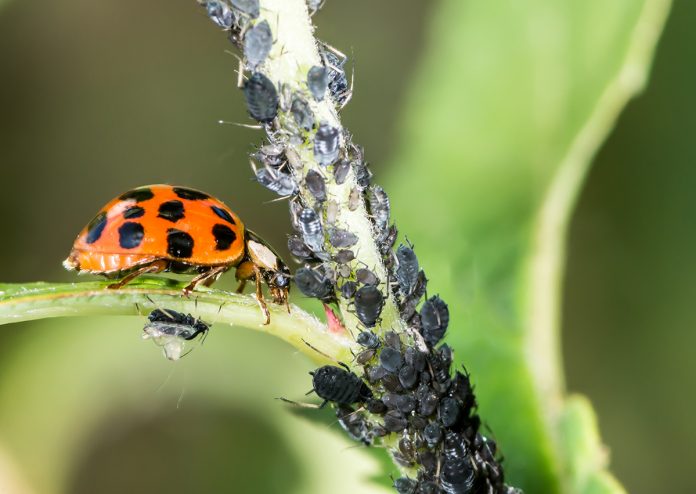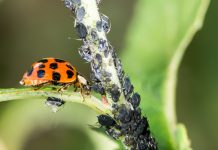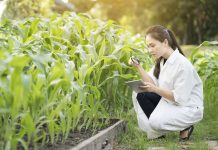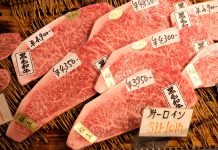Dr Joel R. Coats, Distinguished Professor of Entomology & Toxicology, explains the process of moving forward with biopesticides in the field of natural pest control
In the field of natural pest control, there are many tactics available to the practitioner, but it can be difficult to determine which are the best ones for any given situation. The different types of resources are available from various outlets, and seldom are there commercial enterprises that specialise in offering a full gamut of products. Natural pest control can, of course, address insect pests, weeds, fungi, bacteria, algae, rodents, molluscs, birds, etc., depending on one’s specific circumstance in dealing with the pest, i.e., it depends on one’s particular definition of “pest”.
Further, many of the scenarios needing pest control are peculiar to a few locations or climates or crops or ornamentals and are not suitable for attracting the development of a mass-market product. Niche markets are typically filled by small companies, often very specialised, that address quite specific issues, and typically have a limited number of options available for those issues. Recent trends in the industry indicate that the economics of small market products for pest management are not so favourable as mass-market products, such as those developed by large multinational companies that produce agrochemicals or proprietary seed.
It is unfortunate, but even some of the most important pest control challenges in the world, e.g., control of malaria and other arthropod-borne diseases of humans, are functionally, or economically, “small markets” with a very limited set of tools in the toolbox; impressive progress has been made recently, despite those limitations. New products are costly to discover and develop, plus regulatory matters, registrations, licensing, labels and marketing are expensive as well. Thus, the fundamental truth about natural pest management products is they are only available as limited tactics, in scattered outlets, and often subject to seasonal availability; however, online shopping is making their availability and accessibility significantly more realistic.
Where do biopesticides fit?
There are myriad natural pest control products that have been brought to market and a myriad more that have been experimentally shown to have the potential for utility. They range from living pathogens that control an insect or weed or fungus to parasites or predators of insects, to herbivores that control weeds, to minerals, to behaviour-modifying compounds such as repellents or attractants, to biopesticides. Technically speaking, a biopesticide is any material of biological origin that is useful in the management of pests. Speaking in a broader sense, the term “biopesticide”, as used today, carries connotations of being safer for people, safer for the environment and the non-target species in it, and leaving fewer residues due to being less persistent.
In many cases, biopesticides that are in commerce today fit those specifications precisely when used according to label, but there are always cases where a given material may, in a specific instance, not fulfil all of those characterisations completely and exclusively. Strictly speaking, strychnine is a biopesticide; however, from a principled and practical viewpoint, it has basically been banned everywhere due to danger of toxicity to vertebrate species (e.g., people, pets, livestock, wildlife); it can be held forth as the definition of what a biopesticide is not.
Biopesticides fall into two broad classes based on their utility: those used as antimicrobials in healthcare and cleaning products everywhere, and secondly, those used to manage pests such as insects, mites, ticks, weeds, and plant diseases in agriculture, forestry, stored materials, protection of structures or protection of public or veterinary health. As we focus primarily on the latter group, it should be mentioned that some of the natural antimicrobials are also relevant in the wider biopesticide category, e.g., thyme oil or the principal phenylpropanoid in it: thymol.
Another way biopesticides can be classified is as a function of their origin: those of microbial origin, those of plant origin, and there are even some of animal origin. The microbially-based biopesticides enjoyed newfound success in the 1970s as Bacillus thuringiensis (a soil bacterium) was exploited on a commercial level. Mass fermentation of the cultures, drying (and killing) of the culture, powdering and selling it as a dust product was widely used as an alternative to DDT, other chlorinated hydrocarbons, organophosphates and carbamates. It enjoyed success in agriculture (especially organic agriculture) and forestry. The unique mechanism of action of the crystalline toxin produced in the fermentation allowed the powder to be effective against many pesticide-resistant species, and there were no residues of consequence because of virtually no toxicity to vertebrates. Growers of organic produce still use it widely.
Many of the other microbially-based biopesticides are living pathogenic agents, including:
- Bacteria, e.g., Bacillus sphericus for mosquito larval control.
- Fungi, e.g., Beauveria bassiana, from the soil, which infects and kills many types of insects.
- Microsporidian parasites, e.g., Nosema locustae, for control of locusts and crickets.
- Nematode parasites, e.g., Heterorhabditis bacteriophora, which control many insect pests viruses, which tend to be almost totally species-specific.
There are many positive attributes to these insect-killing microbiological agents, as well as comparable pathogens that are effective against weeds or plant-pathogenic fungi. The number of species of microorganisms in nature seems nearly limitless, and a thriving industry has evolved isolating and growing out individual species, to harvest their toxins and identify the genes responsible for producing those toxins.
Toxicity including plant essential oils
Many of the microbial toxins that are effective against insects have very little toxicity to any vertebrates (although allergic reactions always remain a possibility), and there are generally no residues of import. This selectivity is hugely advantageous, but most of them are more expensive than chemical products, owing to their specialised production (fermentation or reared in actual insect hosts) and their short shelf-life, including through the packaging, storage, shipping and distribution. While their selectivity is excellent, they are substantially difficult and expensive to produce.
Certain chemicals of biological origin have historically been recognised for their value in helping manage pests of humans, and most of them have come from plants. Every culture has, over the centuries, learned which plants have desirable properties, especially those that are used in traditional medicine, or for recreation, or valuable for pest control: notable examples are the many pharmaceuticals, the psychoactive plants, and the botanical insecticides.
Some of the first botanical insecticides were the pyrethrins, produced by a certain type of chrysanthemum native to southwestern Asia. The mature flowerheads were collected for drying and then used in bags tied around the necks of nomadic herdsmen to protect them from lice, fleas, and other ectoparasites of humans. Many other plant products have also been appropriated as pesticides over the centuries: e.g., rotenone and nicotine are well-known toxins produced by Derris root (a legume) and tobacco (in the nightshade family), respectively; those two have been banned in much of the world because, although they could kill insects, they were also hazardous to the people using them. The early botanicals were very degradable and left no residues, which was an advantage over many of the other alternatives at the time (inorganics featuring arsenic, lead, mercury, and other seriously toxic minerals that left residues on food, in drink, e.g., in wine and soil).
Plant essential oils have been used for millennia for protecting stored grain and other products. Many fragrant plants synthesise simple molecules called terpenes which are responsible for their aroma or their “essence”. The terpenes are very biodegradable and leave no residues, but their major advantage over the aforementioned toxins is their level of safety. These oils from mints, citrus, eucalyptus, cedars, pines, lemongrass, rosemary, and other spices and herbs have a long history of safe use for fragrance and flavour purposes, and some have been useful as pharmaceuticals (menthol, camphor, wintergreen). Much like the other natural plant-derived insecticides, these terpenes are products of the plants’ biosynthesis pathways that evolved to protect the plant from pests, diseases or competitors; these plant secondary compounds are considered to be their chemical defence.
How well can we use these safer chemical-defence agents that plants employ for killing or repelling herbivores? There are many products on the market with those plant essential oils or their terpenes as the active ingredients. To date, their success seems to be dependent on their formulation and delivery. It has been clearly proven that they can work as well as conventional pesticides if the concentration, formulation, and delivery method are optimised.
More on biopesticides
Another class of biopesticides comes from animal sources. While there are not nearly the number of examples to discuss historically, some of the recently developed ones are intriguing for their future potential. Venoms from wasps, scorpions, snakes, and spiders have been painstakingly characterised and evaluated for their magic mix of toxins, and sometimes for their potency against insects. Some relatively exotic natural small-molecule compounds are present, but often they feature small, specialised proteins, called peptides. Molecular biology techniques have subsequently allowed the sequencing of peptides that are constituents of some venoms. Venoms abound in nature, in worms, centipedes, mites, jellyfish, and countless other marine animals, and the invertebrates in particular.
As “chemical prospecting” has rapidly developed as a quest, aided by new and better analytical technologies, people are continuously searching any and all natural sources for compounds to be used as pharmaceuticals, flavours, aromas, pigments, pesticides, nutraceuticals or cosmetics. These searches can be clouded sometimes with ethical questions of “ownership” or questions of who should profit from the discoveries. Nevertheless, natural products are the wave of the future, and the future is now.
*Please note: this is a commercial profile
© 2019. This work is licensed under CC-BY-NC-ND.
Contributor Details
More About Stakeholder
-
Dr Joel Coats – Department of Entomology
Dr Joel Coats discusses his work in the field of Entomology and his work at the Iowa State University, including key aspects of his research.
Editor's Recommended Articles
-
Must Read >> Plant essential oils: Nature’s insecticides















